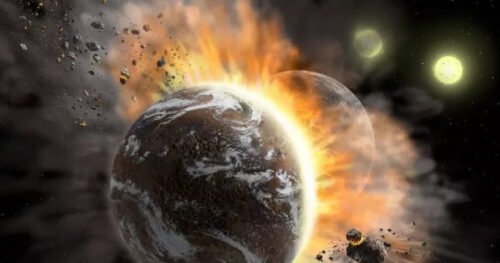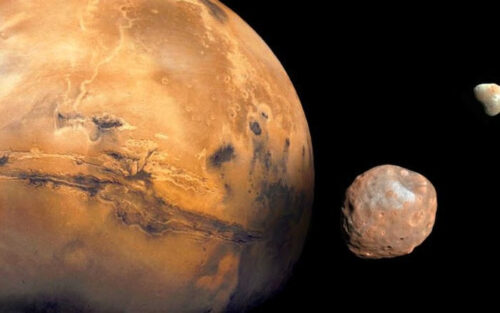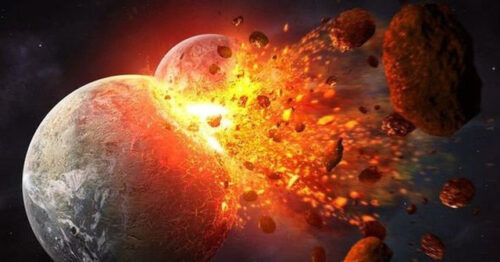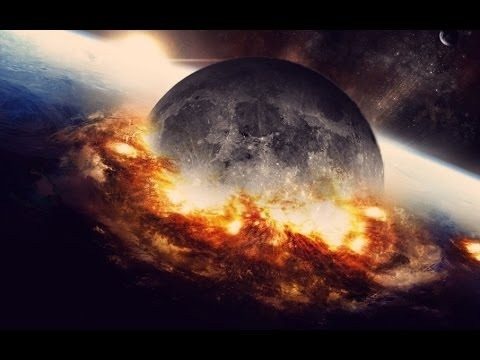
The existence of extraterrestrial life may be at risk due to collisions between moons and planets.
New research using computer simulations suggests that such collisions could pose a regular danger to potential alien life on exoplanets.
While the idea of a moon crashing into Earth may sound like a doomsday scenario from science fiction, it may be a common occurrence for planets in other star systems.
This article explores the findings published in the journal Monthly Notices of the Royal Astronomical Society, shedding light on the potential risks faced by budding alien life on these planets.
According to the recent research, computer simulations indicate that collisions between exoplanets and their moons (known as exomoons) might be a regular event, with potentially catastrophic consequences for any nascent alien life on these planets.
Although exomoons have yet to be confidently detected, scientists expect them to be abundant throughout the universe.
Astrophysicists, such as Jonathan Brande from the University of Kansas, who was not involved in the research, stated that the presence of moons in exoplanet systems is expected.

This interest in exploring the interactions between alien moons and exoplanets, as well as their impact on the potential for life in distant star systems, has driven researchers like Brad Hansen from the University of California, Los Angeles, to delve into the subject.
Gravity governs the interactions between planets and their moons, resulting in phenomena like tides and the gradual recession of our own Moon.
Over time, Earth’s Moon has been moving away from our planet, causing Earth to spin more slowly. This relationship between the Moon’s orbit and Earth’s rotation is crucial.
If this trend were to continue long enough, the Moon could eventually escape Earth’s gravitational pull.
However, in other star systems, particularly those with planets closer to their stars than Earth is to the Sun, this process could occur much more rapidly.
Consequently, planets and their “unstable” moons could collide within the first billion years of their formation, as indicated by Hansen’s calculations.
Computer simulations demonstrate that moons wandering away from their host planets often return with a bang, crashing into the planets and creating massive dust clouds.
These infrared-glowing dust clouds, illuminated and warmed by the star’s light, last for approximately 10,000 years before fading away.
NASA’s Wide-field Infrared Survey Explorer observations suggest that every star will experience such an event at some point in its lifetime.

Although astronomers have only observed about a dozen of these short-lived dust clouds, some remain unconvinced that they originate from exomoons, suggesting alternative explanations such as collisions between two planets.
Further observations are needed to determine the role of exomoons in exoplanet evolution and the potential impact of these collisions on alien life.
The possibility of collisions between moons and planets poses a threat to the existence of extraterrestrial life.
Computer simulations and astronomical observations shed light on the potential risks faced by alien life in other star systems.
While moons are often considered beneficial for stabilizing a planet’s axis and creating favorable conditions for life, catastrophic collisions like those depicted in the simulations would outweigh any advantages, resulting in the destruction of potential life forms.

As we explore the universe’s mysteries, it is important to consider the potential consequences of such collisions on the search for extraterrestrial life.
Understanding these dynamics contributes to our knowledge of the cosmos and the challenges that life beyond Earth may face.
